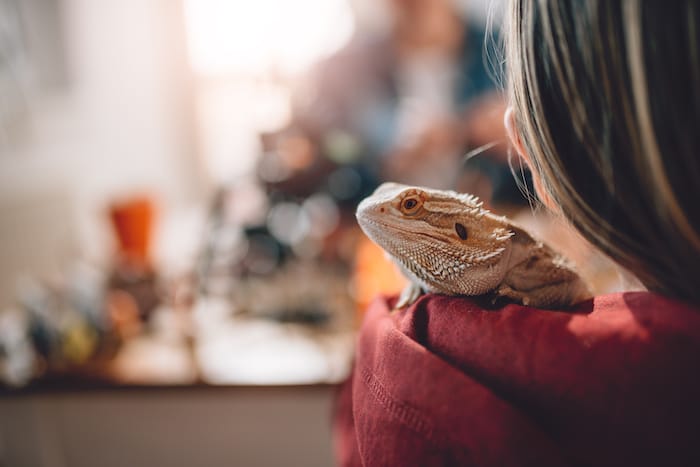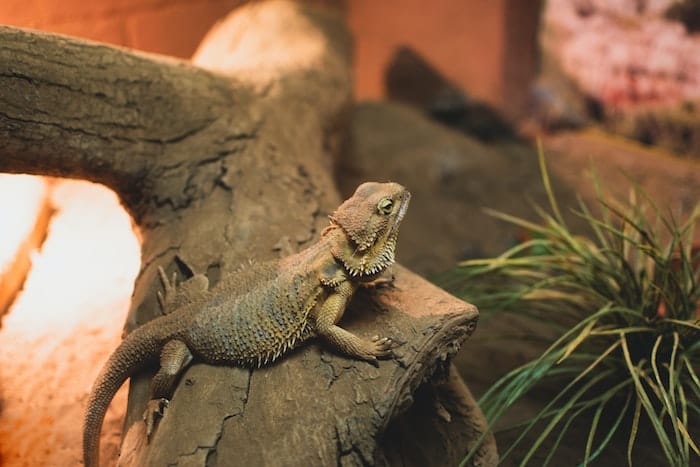Many people choose bearded dragons as pets instead of dogs or cats because they’re cute, highly social animals and don’t need much care. A healthy bearded dragon can live for 10 to 15 years. These robust-looking lizards are very responsive to their owners and very easy to tame. In short, bearded dragons are the most convenient pets.
But before bringing a bearded dragon into your home, you must know how to care for them. They may not need extra care from you, but you must do some essential things for your bearded dragon.
If you’re considering welcoming a bearded dragon into your family and don’t know how to care for them, don’t worry because you’ve stumbled upon the right place, as I will state some tips here on this matter
Tip 1: Perfect-Sized Enclosure
Generally, bearded dragons or beardies grow around 45cm long, which includes their long tail. They need enough space to roam around with their long tail. An enclosure for your adult bearded dragon should be 120cm long, 60 cm in height, and 60 cm in width.
Make sure your Bearded Dragon enclosure is well-ventilated and made from solid material, as it’ll be easy to clean because you should always keep your bearded dragon’s habitat clean. You can add some rocks and branches to make the habitat look like a real jungle and give your beardie a comfortable space.
Tip 2: Comfortable Lighting
Beardies need to receive ultraviolet lights and heat from the sun on a daily basis. It would be best if you used high ultraviolet (UVA and UVB) output light bulbs in the vivarium to give your bearded dragon the right amount of heat and ultraviolet light. UVA and UVB produce Vitamin D3 in their body, which is necessary for your lizard.
At least 2/3 or ¾ of the enclosure should be exposed to the UVB rays for 12 to 14 hours a day, or else your reptile friend may get the metabolic bone disease. The best lights that get used the most for beardies are mercury vapor bulbs and fluorescent bulbs.
Tip 3: Make Sure Of The Perfect Temperature In The Vivarium
The bright end of the vivarium should be 38-42 degrees celsius for basking and 22-26 degrees in the shaded end. Your bearded reptile needs a hotter temperature during the daytime and a much cooler temperature at night.
It would help to cool down your lizard’s home in the morning, afternoon, and evening with a quick misting. You can also install a fan in the vivarium to suck out the stale air and blow fresh air.
Tip 4: Ensure The Good Health Of Your Bearded Dragon
Keep the health of your reptile friend always checked with the help of some veterinary care. Typically in the cool season, beardies tend to slow down, sleep more and eat less. You don’t need to worry about them when they do this. It’s like a bit of hibernation for them, which is called brumation.
But when your lizard friend starts to lose weight at an alarming rate and entirely stops eating, keep a close eye on them and call a vet as soon as possible.
Tip 5: Foods For Beardies
The favorite foods of bearded dragons are insects and vegetables. You must give them different kinds of plants to eat to keep them healthy. They will love you if you give them mealworms, king worms, and crickets to eat in a large potion.
Also, make sure to give them essential supplements. Cactus pads, dandelion leaves, mustard greens, and turnip greens are the best kind of greens that you can feed your beardies. Some vegetables, like spinach, broccoli, and romaine, are dangerous for beardies.
You can also give bearded dragons some fruits to eat. They mainly eat watermelon, apples, strawberries, and peaches. A good diet for your beardie will make sure of their excellent health.
Conclusion:
Pets are our dearest friends, but they also come with some big responsibilities. We need to take proper care of them in order to keep them alive with us for more time.
Pets like bearded dragons might not need much caring, but as they are used to their natural habitat, you must give them a place to live that mimics their natural habitat. You can follow the tips I’ve given you to keep your bearded dragon safe and healthy.
Related Reading


